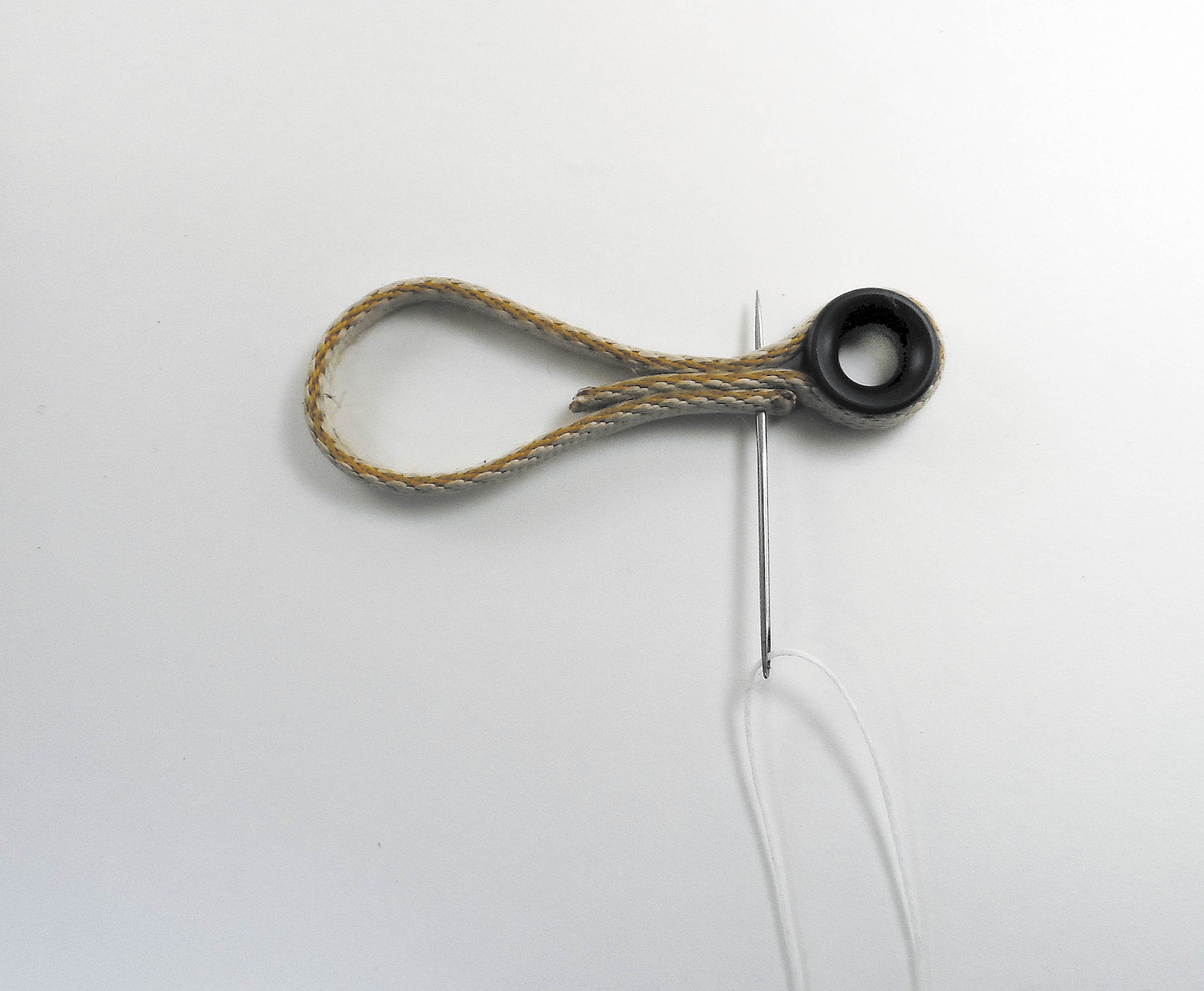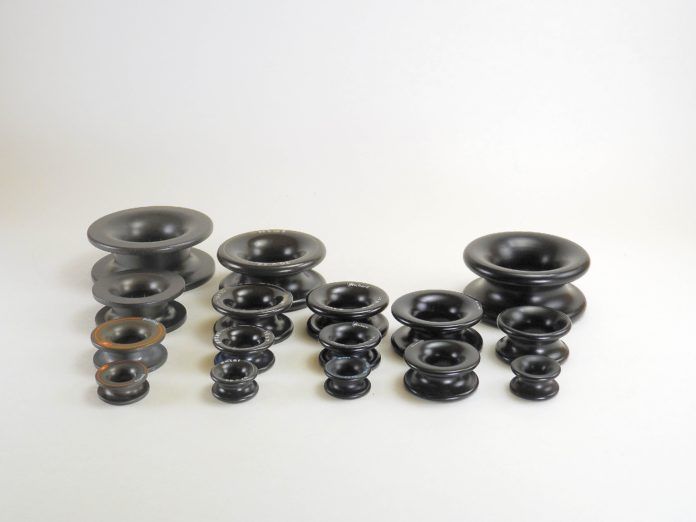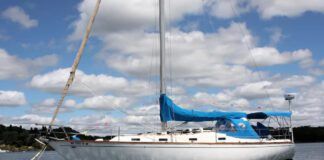Our PS Advisor article on barber haulers illustrated an arrangement that relied on a low friction ring to control tension on the sheet. Although you can buy pre-rigged control lines that terminate with low friction rings, sailors should be able to do this themselves.
When it comes to attaching rings there are at least a dozen ways that work, each requiring different skill sets. In most cases, installation should take only five minutes once a few simple tricks are learned. For splices, remember that deeper ring grooves will be tolerant it will be of a loose splice.
Dyneema Single Braid (Amsteel). To install a ring at the of a line, simply make a tight eye splice, including the ring. A locked brummel splice is probably the simplest , but a long bury with lock stitching is just as strong. If you don’t want to splice, you can use seizing. You’ll need only the most basic skills with needle and palm (see Stitching vs. Splicing, PS October 2014). The seizing thread must be non-stretch and the combined lashing about 60 percent as strong as the rated load of the line. For example, if you are using doubled 80-pound test Spectra whipping twine to secure -inch Amsteel (8,600-pound breaking strength), you need at least 30 full turns, plus a series of half hitches to secure it. For larger line sizes, seizing with Amsteel cord makes more sense.
Polyester Double Braid. A knot wont hold the ring and getting a traditional tucked splice tight enough around the ring requires considerable practice and effort. However, a sewn splice is strong, fast, and will fit perfectly every time. With appropriate chafe and UV protection, it will be as strong as the line and last as long as the line (see Stitching Instead of Splicing, Practical Sailor October 2014). In the case of a short loop, where the tails will overlap, the sewn eye is made by stitching through each of the three lines in a spiral pattern, like a spring, passing through each core. Use 40-pound test whipping twine and consider each pass to add about 20 pounds breaking strength. Use at least 10 passes in each line, and as many as required to reach the required breaking strength.

Webbing. No splicing or sewing skills whatsoever? Narrow webbing can work. For working loads up 1500 pounds, we found thin Dyneema climbing slings (Mamut, 5,000 pounds) to be a handy solution for 10-14 mm rings; just seize or sew tightly. This works best Antal or Nautos rings because of their deep groves. Some rings can be popped right into the pre-sewn eyes of rock climbing quick-draws. You’ll have to take your rings with you to the climbing store to match up sizes, though. The limitations to using webbing are locating strong webbing that is narrow and strong twine (see Top Whipping Twines, PS December 2014). Multiple layers, like a lashing, work for higher loads.

Lashing. Lashings can be just the thing to secure a ring to a stanchion or toe rail to make a fairlead. Small Amsteel works fine; however, if the load is modest, as it generally is for a fairlead, then less slippery polyester cord is easier to work with. Finally, if the attaching lanyard and the lines for the eye are both small, the attaching lanyard can be a pre-made loop that passes through the center of the eye and attaches to the ring luggage tag style.








































I’m confused by the lack of concise editing.
What do these statements mean?
“For splices, remember that deeper ring grooves will be tolerant it will be of a loose splice.”
“To install a ring at the of a line, simply make a tight eye splice, including the ring.”
If the groove around the outside of the ring is deeper, a loose eye is more likely to stay in place. This is particularly important when an LFR is installed in a stretchy material like bungee or nylon, or if two lines are spliced to one ring.
The most common installation of an LFR is in a spliced eye. Include the ring, as you would a thimble.
Drew:
You’re missing the readers pointWith regard to the first exerpt quoted from the article. He gave you a second chance to correct the text by adding the obviously missing object, but you swung and missed:
“…deeper ring grooves will be tolerant (?) it will be…”
Drew:
I’m my own editor, so I always spot my errors after pushing “send”:
You’re missing the reader’s point
with regard to the first excerpt quoted from the article. He gave you a second chance to correct the text by adding the obviously missing object, but you swung and missed:
“…deeper ring grooves will be tolerant (?) it will be…”
I’m as dumb as a bag of winch handles and I understood. More important to me was trying to remember one use of these on my old 37′ sloop. Not common but I can see uses right away. Thanks for the article and I’ll add this to my bag. Not the winch handle one.
Wondering if anyone has experience with Karver’s KRO open rings? They sound intriguing, but it’s unclear to me how they are rigged, in particular for furling lines.
This is “muy encima” or very brief and confusing. If you already know all of these things or are writing the article, you probably can understand it. What are the images of? no labels…
There’s multiple ways to attach these to soft shackles. The bullseye weave is a nice option. The article referenced in the first paragraph doesn’t detail the biggest challenge- how to cleat uncovered dyneema. Add a covered tail?